Famous South African Artists – Influential Artists in South Africa
Although marred by a politically and racially divided past, South Africa today is a country that represents diversity in art and culture, along with a sense of unification. This does not mean, however, that it is without its tensions and problems in the modern era, and famous South African artists have always strived to highlight both the atrocities and the beauty of this fascinating land. Artists in South Africa have fused their local culture with influences that range from Asia to Europe, and the Americas. Let’s look at the South African contemporary artists, as well as the South African painting artists of the past, that depicted the ever-changing face of this constantly developing nation.
Discovering the Most Famous South African Artists
As a necessary stop along the old trade routes of the past, South Africa has seen people from all over the world pass through it. The Dutch were the first to settle there, followed by the French, the British, and slaves from all around Asia. Not to forget the native tribes and peoples that already inhabited the land before the settlers arrived. Even once slavery was abolished, a system still existed that separated people based on class, with each being designated specific areas to live in. However, this changed in the 1990s when these laws were abolished.
During both the period before the abolishment of Apartheid, and after its demise, many artists in South Africa created works that expressed their feelings about the environment in which they found themselves.

While old South African painting artists focused on landscapes, historical events, and their daily lives, South African contemporary artists create works that exude a certain feeling of renewal and exuberance. In both eras, there were also artists who called attention to the plight of the poor, destitute, and forgotten. Today, South African art is just as varied as its people, with each artist drawing on a seemingly endless supply of creative inspiration – from both local and international sources. Let’s take a look at the famous South African artists that have embodied these shifting times.
Ernest Mancoba (1904 – 2002)
| Full Name | Ernest Mancoba |
| Nationality | South African |
| Date of Birth | 29 August 1904 |
| Date of Death | 25 October 2002 |
| Place of Birth | Turffontein, Johannesburg South, South Africa |
Mancoba began his creative career as a furniture maker at Grace Dieu missionary school before moving on to religious-themed sculptures. His interest in art started in 1925 when a substitute teacher called Ned Paterson arrived at Grace Dieu. He was a recent art school graduate training for the priesthood, who introduced wood carving and quickly garnered popularity among Grace Dieu’s artistically oriented members. Originally, Mancoba used the school’s bas-relief approach to create ornamented pieces of furniture in the school woodwork shop.
In 1929, he experimented with freestanding sculpture, creating a commissioned work with a model in a contrapposto posture.
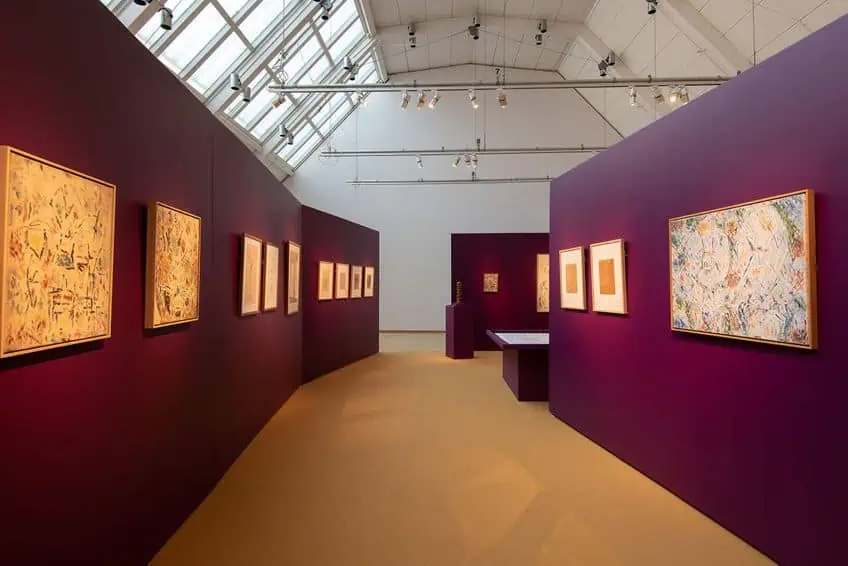
African Madonna (1929) is thought to be the first contemporary sculpture created by a Black South African and is currently on permanent exhibit at the Johannesburg Art Gallery. In 1938, he left for Europe after receiving a scholarship to continue his studies in Paris. Today he is regarded as one of the first black South African contemporary artists working professionally. Ernest Mancoba was not hesitant to criticize Europe’s one-sided connection with Africa and its art, and he pioneered his own modernity within art.
Gerard Sekoto (1913 – 1993)
| Full Name | Gerard Sekoto |
| Nationality | South African |
| Date of Birth | 9 December 1913 |
| Date of Death | 20 March 1993 |
| Place of Birth | Botshabelo, Mpumalanga, South Africa |
Gerard Sekoto is largely regarded as a father of black South African art. He was born in Botshabelo in 1913 – the year that saw the implementation of the “Natives Land Act”, the first segregation law enacted by the South African Parliament. The government’s subsequent efforts to abuse, alienate, and humiliate non-white South Africans forced Gerard Sekoto, as well as many other artists, musicians, scholars, and activists, into exile.
Despite the restrictive circumstances for black artists in the country, Sekoto was able to achieve some acclaim during his early years in District Six, Sophiatown, and Eastwood.
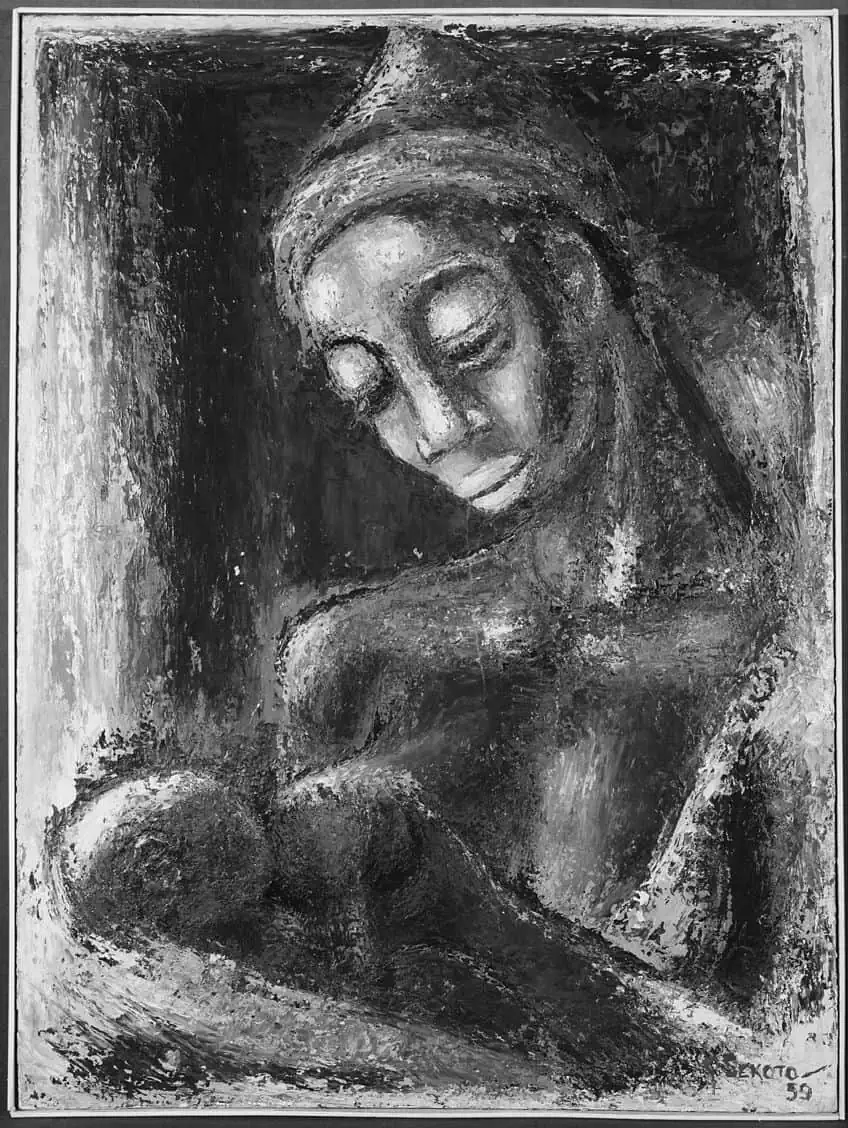
His works from this era convey the intensity and vitality of the townships’ cultural expressions and conflicts, and function as historical records of a way of life before these settlements were demolished. Sekoto was acclaimed for his ability to convey the heart and reality of everyday settings, offering dignity to South Africans without the barrier that distinguished European painters of the time imposed between their subjects and themselves. Up until 1988, his legacy was mostly ignored, but towards the last days of his career, Sekoto’s art earned respect both in South Africa and internationally.
David Goldblatt (1930 – 2018)
| Full Name | David Goldblatt |
| Nationality | South African |
| Date of Birth | 29 November 1930 |
| Date of Death | 25 June 2018 |
| Place of Birth | Randfontein, South Africa |
From 1948 until his passing in June 2018, David Goldblatt documented South Africa’s architecture, cultures, and landscapes. Goldblatt was noted for his photography that examined both private and public life in South Africa and produced a collection of incredible images that represented life during Apartheid. He also shot landmarks and buildings from the colonial era comprehensively, with the concept that the architecture of a country also tells us something about the individuals who designed, built, and lived in them.
During the apartheid regime, he launched the Market Photography Workshop in Johannesburg in 1989 to assist underprivileged children with additional visual literacy education, and in 1998, he became the very first South African to present a solo exhibit at the renowned Museum of Modern Art.
A large percentage of his life’s work is housed and shown at the Goodman Gallery in Johannesburg. It was recently announced that a deal with Yale Institution in the United States was struck, giving Goldblatt’s full negatives library to the university. Through the Photographic Legacy Project, a comprehensive digital archive of his works will be developed in South Africa and made freely available to the public.
Marlene Dumas (1953 – Present)
| Full Name | Marlene Dumas |
| Nationality | South African |
| Date of Birth | 3 August 1953 |
| Date of Death | N/A |
| Place of Birth | Cape Town, South Africa |
Marlene Dumas was born in Cape Town in 1953 and grew up in Kuils River where her family had a vineyard and she experienced the Apartheid system during her upbringing. Dumas started painting in 1973, expressing her political opinions and views on her identity in South Africa as a white lady of Afrikaans origin. Today, she is one of the most prolific painters in the Netherlands, where she presently works and resides.
Dumas frequently employs polaroid images of her boyfriends and friends as reference material, as well as magazines and pornographic images.
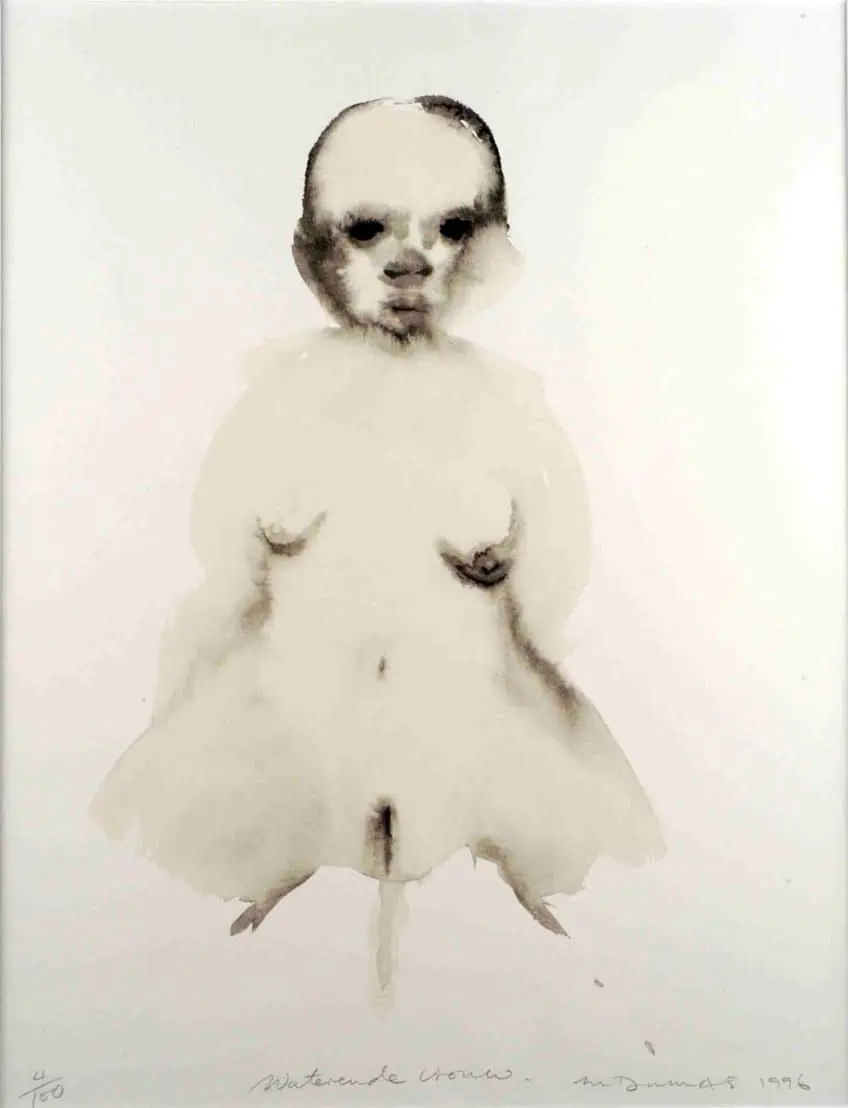
Marlene Dumas’ artworks are regarded as portraits; however, they do not depict individuals but rather an emotional state. Her artwork addresses more serious subjects and themes, such as race, sexuality, guilt and innocence, brutality, and compassion. She represents her models, friends, and notable political people in most of her paintings. The purchase of Dumas’s Jule-die Vrou (1985) made her one of three female painters alive today to sell for more than $1 million.
William Kentridge (1955 – Present)
| Full Name | William Kentridge |
| Nationality | South African |
| Date of Birth | 28 April 1955 |
| Date of Death | N/A |
| Place of Birth | Johannesburg, South Africa |
William Kentridge is a famous South African artist, performer, and filmmaker. The primary focus of Kentridge’s output has been to investigate the years that preceded and followed apartheid. He is most recognized for his animated illustrations. To convey his narratives, he conflates his life with that of invented characters, creating his distinctive dynamic, gestural works in ink and black charcoal. To make the film stills in his animations, a single picture is retouched repeatedly, with every new image a palimpsest retaining indications of the prior artwork’s erasure.
Kentridge, who was born in Johannesburg, South Africa in 1955, achieved international renown for 9 Drawings for Projection, a series of short films that ran from 1989 until 2003.
His solo exhibit Thick Time premiered to considerable acclaim in 2016 at White Chapel Gallery in London, echoing Dadaist collage and technology from the 1920s. He still lives and works in Johannesburg, and his artwork is in the collections of the Art Institute of Chicago, the Museum of Modern Art in New York, the Goetz Collection in Munich, and the Tate Gallery in London, among others.
Zanele Muholi (1972 – Present)
| Full Name | Zanele Muholi |
| Nationality | South African |
| Date of Birth | 19 July 1972 |
| Date of Death | N/A |
| Place of Birth | Umlazi, South Africa |
Zanele Muholi is a renowned photographer and visual activist from South Africa. Muholi has been documenting the lives of gay, black lesbian, bisexual, transgender, and intersex individuals in South African townships for over 10 years. Responding to the LGBTI community’s continuous experiences of prejudice and violence, Muholi began an ongoing project depicting black lesbian and transgender people in 2006. Muholi’s stunning pictures contribute to a more inclusive and representational South African LGBT history.
Muholi becomes both the subject and the image-maker in a more recent continuous series in which she turns the camera on herself.
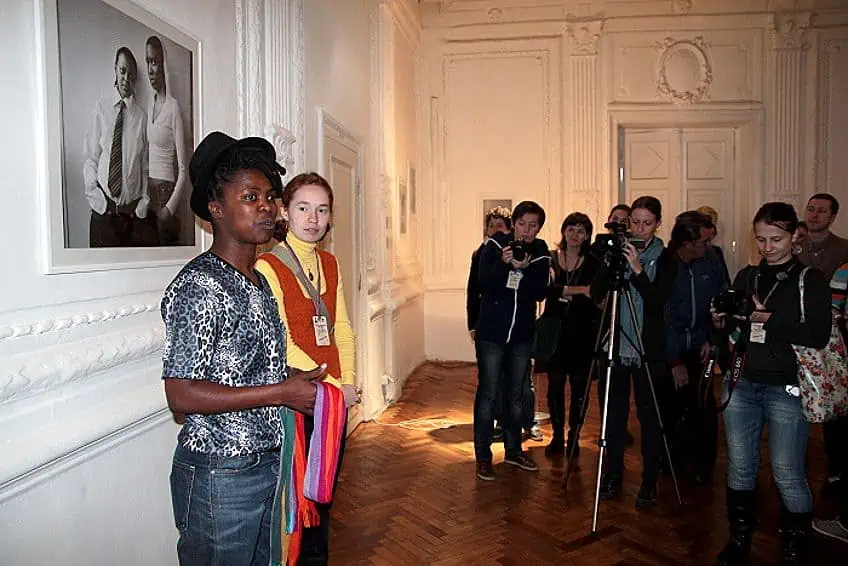
Muholi’s self-portraits address certain periods in South Africa’s political history by experimenting with various identities and tropes. Muholi reclaims her blackness by accentuating the darkness of her skin tone, which counteracts the culturally prevalent representations of black women in society today. Muholi continues to instruct and co-facilitate photography courses for young gay people living in townships, empowering them to chronicle their experiences. They are frequently found in townships, where the stigma of homosexuality often leads to rape, assault, and death.
Nicholas Hlobo (1975 – Present)
| Full Name | Nicholas Hlobo |
| Nationality | South African |
| Date of Birth | 1975 |
| Date of Death | N/A |
| Place of Birth | Cape Town, South Africa |
Nicholas Hlobo started his career towards the end of apartheid in 1994 when South Africa was experiencing a newfound feeling of freedom and national unity. With the enforcement of discrimination and segregation abolished, Hlobo and his contemporaries were able to publicly express their beliefs and opinions under the protection of these new rules. Hlobo’s subtle reflection on the democratic aspects of his native country, as well as his concerns about the shifting worldwide art discourse, remain central to his art.
Hlobo makes elaborate two and three-dimensional hybrid creations from tactile materials such as leather, wood, ribbon, or rubber debris that he blends and threads together.
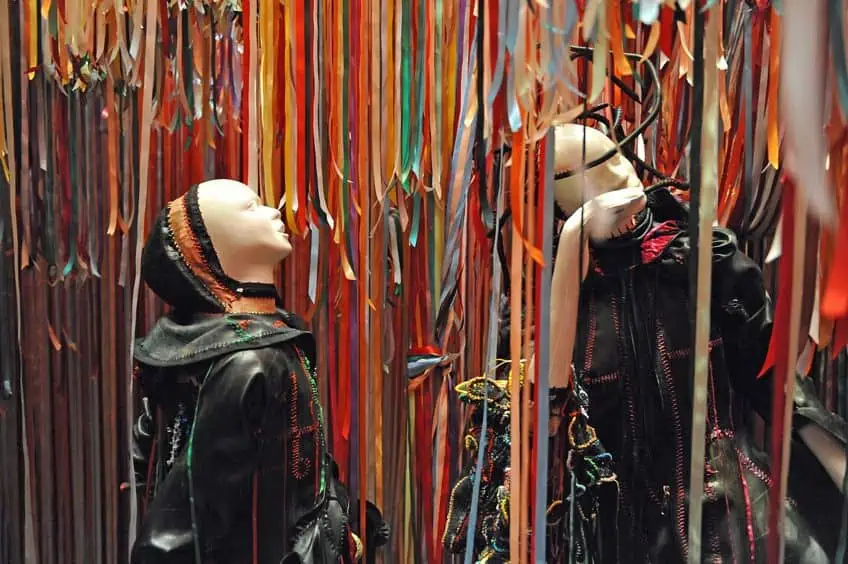
Each element is associated with a specific historical, social, sexual, or ethnic identity. Together, the pieces provide a complex visual story that represents both the cultural dichotomies of Hlobo’s home and those that exist worldwide. His emotive, anthropomorphic images and thematically loaded materials convey the artist’s own varied personality within the framework of his South African ancestry.
Ayanda Mabula (1981 – Present)
| Full Name | Ayanda Mabula |
| Nationality | South African |
| Date of Birth | 1981 |
| Date of Death | N/A |
| Place of Birth | Qonce, Eastern Cape, South Africa |
Ayanda Mabulu is known globally for his strong, often contentious figurative artworks that address injustices and inequality in South Africa. Since 2010, the self-taught artist has developed a series of polemical graphic works showing high-profile political personalities in nudity or engaging in sexual activities, notably former South African President Jacob Zuma. These provoking situations have resulted in the censoring of Mabulu’s work as well as death threats.
Mabulu’s artworks have a distinctive appearance because of the use of gold leaf, acrylic paint, fabrics, and other materials.
Mabulu’s Healers series highlights the importance of black women in South African culture. Nontsundu, a 2018 acrylic-and-gold-leaf image that sold at auction for $27,923 in 2021, features a lady clutching her sleeping newborn in one arm and brandishing a pistol in the other. Although political parodies are Mabulu’s most well-known works, he also works in sculpting and playwriting. His first museum exhibit in the United States opened in 2018 at the DuSable Museum of African American History.
Mary Sibande (1982 – Present)
| Full Name | Mary Sibande |
| Nationality | South African |
| Date of Birth | 11 April 1982 |
| Date of Death | N/A |
| Place of Birth | Barberton, Mpumalanga, South Africa |
Mary Sibande wants to reclaim autonomy for the African female body in South Africa during the post-apartheid era, rewriting her family’s past of domestic labour in a style that encompasses textile, sculpture, photography, and more. Her counter-histories generally incorporate the artist’s alter ego, Sophie, whom the artist dresses in colorful costumes that imitate domestic worker uniforms. Yet, she dresses them in Victorian garb, converting the mundane into the sacred and the ignored into the extraordinary. She has had exhibitions at the British Museum, the Met Breuer, Zeitz MOCAA, and Somerset House, among others.
Her work may be found in the collections of the Virginia Museum of Fine Arts, the National Museum of African Art, the Norton Museum of Art, the Musée d’Art Contemporain du Val-de-Marne, and several other institutions.
Athi-Patra Ruga (1984 – Present)
| Full Name | Athi-Patra Ruga |
| Nationality | South African |
| Date of Birth | 9 March 1984 |
| Date of Death | N/A |
| Place of Birth | Mthatha, South Africa |
Athi-Patra Ruga is among the few South African artists working today whose work uses myth as a modern reaction to the post-apartheid period. Ruga develops other identities and utilizes them to satirize and attack the current social and political status quo. Ruga’s creative method of inventing myths and other universes is an attempt to observe the traumas of the previous 200 years of colonial history from a distance – from a place where wounds may be examined outside of individual pain and subjective defensiveness.
 Infecting the City 2012 at the Africa Centre (2012) by Athi-Patra Ruga; Africa Centre, CC BY-SA 3.0, via Wikimedia Commons
Infecting the City 2012 at the Africa Centre (2012) by Athi-Patra Ruga; Africa Centre, CC BY-SA 3.0, via Wikimedia Commons
Ruga’s creation of a mythological metaverse inhabited by characters he developed and illustrated in his works has enabled him to construct an intriguing realm of self-reflexivity in which social, economic, and cultural institutions may be challenged and ridiculed. Ruga’s utopia has served as a prism through which he has processed the tumultuous history of a colonial past, critiqued the present, and proposed a potential humanist vision for the future.
As we have discovered from this list of famous South African artists, this country contains people from many diverse races, cultures, and backgrounds, yet all consider themselves “South African”. Artists in South Africa share a tumultuous past and a hopeful future – both of which are reflected in their works. South African painting artists create works that reflect their history, as well as their current environment – a place of struggle, but also of potential, and there has never been a better time for that potential to reach a larger audience across the globe. South African contemporary artists are no longer restricted by the laws of the past, and can instead express their realities and dreams as they see fit. Many of these famous South African artists are now based overseas and are recognized around the world.
Frequently Asked Questions
What Do Artists in South Africa Paint About?
Artists in South Africa paint a range of diverse subjects, ranging from historical and political works, to personal and domestic works. Apartheid has always been a prevalent theme in South African art as it was such a restrictive period in the country’s history. Today, South African artists portray images from their daily lives, portraits, cityscapes, and much more. Many South African contemporary artists are now globally renowned, and their works feature in acclaimed museums across the world.
What Is Contemporary South African Art?
South Africa has a long history of traditional and tribal art that goes back centuries. However, South African contemporary artists produce works that are culturally and socially relevant to today’s topics and issues. In South Africa, most of those topics relate to politics, race, and poverty. During the repressive Apartheid era, many black artists fled the country and went into exile to escape the racist laws that segregated the country based on color. Modern South African art now celebrates the freedoms that the country experienced once those laws changed in the 1990s, following the release of Nelson Mandela and the first democratic election where all citizens were allowed to vote.
Jordan Anthony is a Cape Town-based film photographer, curator, and arts writer. She holds a Bachelor of Art in Fine Arts from the University of the Witwatersrand, Johannesburg, where she explored themes like healing, identity, dreams, and intuitive creation in her Contemporary art practice. Jordan has collaborated with various local art institutions, including the KZNSA Gallery in Durban, the Turbine Art Fair, and the Wits Art Museum. Her photography focuses on abstract color manipulations, portraiture, candid shots, and urban landscapes. She’s intrigued by philosophy, memory, and esotericism, drawing inspiration from Surrealism, Fluxus, and ancient civilizations, as well as childhood influences and found objects. Jordan is working for artfilemagazine since 2022 and writes blog posts about art history and photography.
Learn more about Jordan Anthony and about us.
Cite this Article
Jordan, Anthony, “Famous South African Artists – Influential Artists in South Africa.” artfilemagazine – Your Online Art Source. April 18, 2023. URL: https://artfilemagazine.com/famous-south-african-artists/
Anthony, J. (2023, 18 April). Famous South African Artists – Influential Artists in South Africa. artfilemagazine – Your Online Art Source. https://artfilemagazine.com/famous-south-african-artists/
Anthony, Jordan. “Famous South African Artists – Influential Artists in South Africa.” artfilemagazine – Your Online Art Source, April 18, 2023. https://artfilemagazine.com/famous-south-african-artists/.


